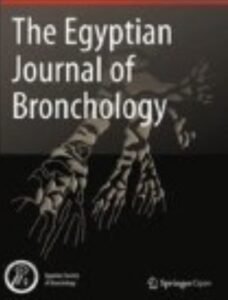Publications

Respiratory function and facial muscle mechanics in chronic obstructive pulmonary disease: the role of pursed‑lip breathing
Authors: Burcu Bagci 1, Engin Ramazanoglu 2, Cagtay Maden 3, Nevhiz Gundogdu 4
Affiliations:
- Department of Physiotherapy and Rehabilitation, Faculty of Health Sciences, SANKO University, Degirmicem Neighborhood, Gazimuhtar Pasa Boulevard No:36, Sehitkamil/Gaziantep 27090, Turkey
- Department of Physiotherapy and Rehabilitation, Faculty of Health Sciences, Mardin Artuklu University, Artuklu Campus, Diyarbakır Road, Artuklu/Mardin, Turkey
- Department of Physiotherapy and Rehabilitation, Faculty of Health Sciences, Gaziantep Islamic Science and Technology University, Bestepe Neighborhood, 192180th Street, Sahinbey/Gaziantep 27010, Turkey
- Department of Chest Diseases, Faculty of Medicine, SANKO University, Degirmicem Neighborhood, Gazimuhtar Pasa Boulevard No:36, Sehitkamil/Gaziantep 27090, Turkey
Journal: The Egyptian Journal of Bronchology - October 2025, Volume 19, Article no. 108 (DOI: 10.1186/s43168-025-00469-0)
-
Field & Applications:
- Medical
- Pulmonology
- Progression monitoring
- Validity
- Non-invasive biomechanical assessment tools such as the MyotonPRO® may serve as adjunctive methods for early detection of functional impairments in COPD.
- Orofacial muscles, particularly the orbicularis oris and buccinator, should be included in the routine assessment of COPD patients, as their biomechanical properties may provide complementary information on disease severity.
Background: Pursed-lip breathing (PLB) is common in chronic obstructive pulmonary disease (COPD) as both a compensatory pattern and a rehabilitation technique, yet the biomechanical properties of the orbicularis oris and buccinator muscles remain underexplored.
Aims: The aim of this study was to compare the tone and viscoelastic properties of the orbicularis oris and buccinator muscles among COPD patients with PLB, COPD patients without PLB, and healthy controls, and to examine the relationship of these parameters with pulmonary function.
Subjects and methods: This prospective observational study included 67 participants: COPD with PLB (n = 21), COPD without PLB (n = 22), and healthy controls (n = 24). Inclusion criteria were age 40–65 years, body mass index 18.5–29.9 kg/m2, and clinically stable COPD (GOLD stage 1–3). Muscle biomechanics were assessed using the MyotonPRO® device, and pulmonary function was evaluated by spirometry in accordance with ATS/ERS standards.
Results: In the COPD group with PLB, FVC, FEV1, and FEV1/FVC values were significantly lower compared to the non-PLB group (p < 0.05). Both COPD groups demonstrated higher tone and stiffness but lower elasticity in the orbicularis oris and buccinator muscles compared with healthy controls (p < 0.05). No significant differences were observed between COPD subgroups. In the PLB group, orbicularis oris elasticity showed a negative correlation with FVC (r = − 0.547) and FEV1 (r = − 0.614).
Conclusion: In COPD, PLB is both a compensatory pattern and a marker of disease severity. Reduced orbicularis oris elasticity relates to impaired lung function, and facial muscle biomechanics may serve as a non-invasive biomarker, supporting the inclusion of orofacial muscles in rehabilitation.
Keywords: biochemical phenomena, chronic obstructive pulmonary disease, elasticity, facial muscles, muscle tonus, pursed-lip breathing, respiratory function test
In conclusion, pursed-lip breathing (PLB) in COPD is not only a compensatory mechanism but also a clinical indicator of disease severity. Alterations in the biomechanical properties of facial muscles accompany this condition, with orbicularis oris rigidity being particularly associated with impaired pulmonary function. These findings highlight the importance of considering PLB in clinical evaluation and suggest that muscle biomechanics assessment may play a complementary role in the future management of COPD.


